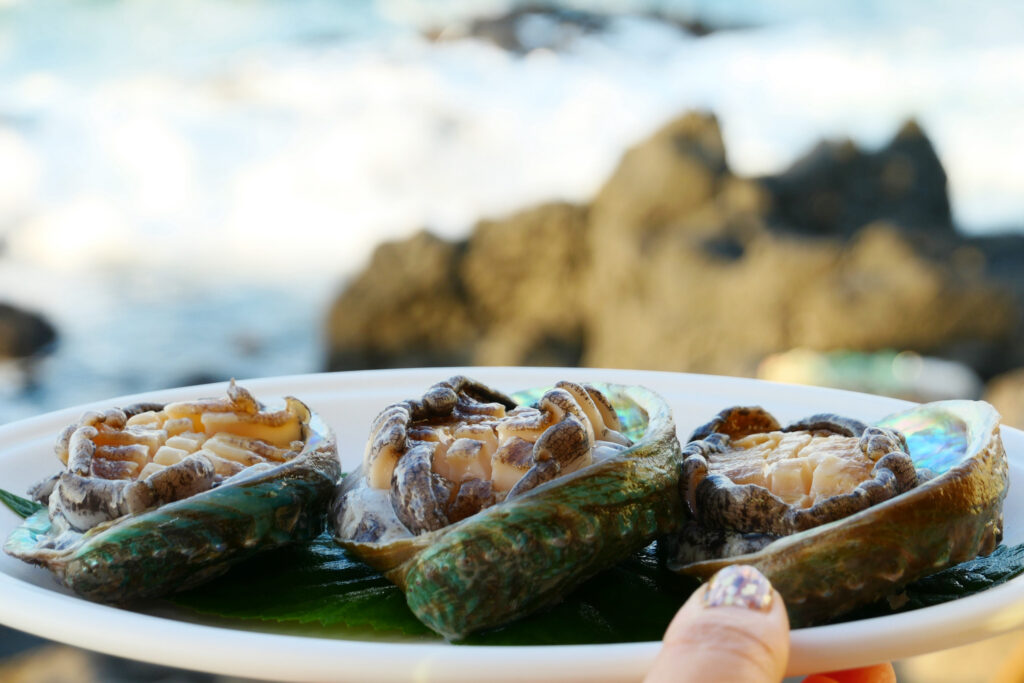Abalone is a considerably rare and mysterious delicacy that comes from the ocean, but is it shellfish?
Abalone is the name used to describe a group of mollusks, which are essentially underwater, or ‘marine’, snails that live inside a shell. Therefore, abalone certainly is shellfish, and that fact is true for the one hundred or more species of abalone.

Read on to learn more about abalone, what it actually is, and why it’s so expensive.
Don’t Judge A Book By Its Cover
At first glance, abalone is certainly not the most appetizing-looking thing you could put on your plate. It’s bizarre-looking at first, and you’ll find it hard to distinguish exactly what it is you’re actually looking at until someone tells you.
Abalone, as a term, describes a diverse group of mollusks that cling to rocks under the ocean, living within iridescent shells. They’re essentially a family of marine snails, but it’s thought that this family extends to include some two-hundred sub-species.
While the abalone shells are quite beautiful and collected for their mother-of-pearl layering, the meat of the abalone itself looks fairly horrible. However, that fact doesn’t detract from the overall culinary value of abalone, which is said to be extremely delicious and desirable food.
That sought-after aspect is one of the factors that drive the cost of abalone up so considerably; a single kilo of abalone can cost as much as five hundred dollars. Although, that one-kilo weight of abalone will only yield around two hundred and fifty grams of edible meat.
There’s no wastage, though – the abalone shells that make up the majority of the yield are repurposed as trinkets or collectible items.
Thankfully, abalone is a diverse shellfish that can be prepared in near-countless ways. It’s the saving grace to the fact that it looks awful, as if it didn’t taste good, it’s likely that it would never leave the ocean and end up on anyone’s plate.
But, it does, and it’s a remarkably popular delicacy in many cultures around the world, and it has been so for hundreds of years. In some locales, abalone is eating raw, straight out of the shell, but in others, it’s prepared in a whole host of ways.
These days, you can find abalone being sold fresh, dried, or canned, with the latter option being the most popular. It’s said to offer unbeatable texture and a powerful taste that is favored by the fans of the ocean-based food.
All About The Abalone
As abalone lives within a shell, it’s classified as shellfish – so, that answers that question. It clings so tightly to rocks under the ocean that it makes it near-impossible to remove without some sort of expert method or tool.
The difficulty in obtaining fresh, wild abalone also contributes to the overall cost of it, as it can only really be harvested by individual divers. There’s no way to cast out a giant net and catch hundreds of abalone in one sweep – it just doesn’t work that way.
However, in some places, abalone is farmed, and it’s a thriving industry. Officially, abalone is listed as endangered, a clear and tangible result of the overfishing that is present all around the world.
It’s a lengthy process, though, as abalone can live for some forty years in the wild, and it takes around five years for abalone to be ready for consumption. If you’re planning on opening an abalone farm any time soon, you’ll need to be prepared for the long run.
Alternatively, if you want to fish for abalone in the wild, you’ll need to head for colder waters off the coast of the United States, South Africa, Japan, or New Zealand. This is where you’re more likely to find abalone, but you need to bear in mind that there are various rules to follow when fishing for abalone.
For example, in Western Australia, you need a special recreational license to be able to fish for abalone legally. Reportedly, the government issues some sixteen thousand licenses every year, but the terms and conditions don’t stop at a piece of paper.
When you’re fishing for abalone, you need to follow certain size, bag, and catch restrictions – there are literal limits on the amount of abalone you can take. There are also seasons wherein you cannot catch abalone and certain bodies of water that are off-limits.
But, if you’re willing to follow the rules and play fair, you can head out and catch some abalone, to consume however you so desire.
